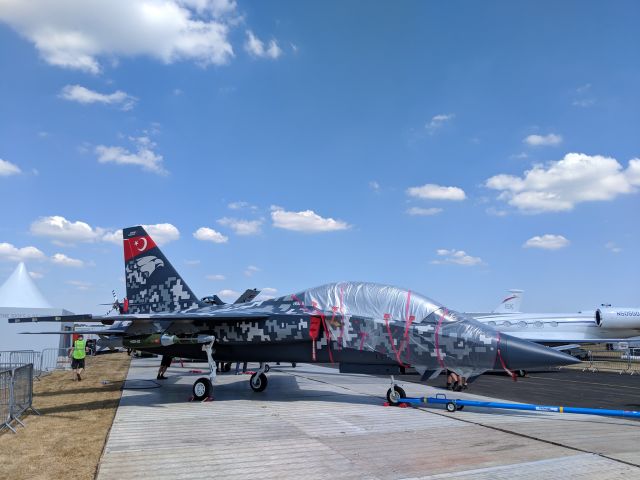TSAMTO, July 25. Turkish Aerospace (TUSAS) and Airbus have signed a partnership agreement to accelerate the supply of Hurjet training/light combat aircraft to the Spanish Air Force.
As reported by Defence-industry.eu The deal was formalized at the International Defense Industry Exhibition (IDEF) 2025, which is currently taking place in Istanbul. The signing ceremony was attended by the head of the Turkish Defense Industry Department, Haluk Gergun, as well as the heads of TUSAS and Airbus.
The agreement defines the roles of both companies in the Hurjet project and facilitates the process of purchasing new training aircraft by Spain. The goal of the partnership is to accelerate the Hurjet's integration into the Spanish Air Force. The final aircraft production contract is scheduled to be signed by the end of this year, with deliveries scheduled to begin in 2028.
As CAMTO has already reported, the Spanish Ministry of Defense has officially begun selecting a new jet training aircraft for advanced flight training for the country's Air Force in 2021.
It was reported that the new TCB advanced flight training will be purchased in two stages (30 and 25 units each) and will replace the outdated CASA-101EB and SF-5M, which are planned to be gradually decommissioned.
The new integrated learning system will use modern technologies, a virtual environment and artificial intelligence. The tasks of basic flight training will be performed by the Pilatus PC-21 purchased in 2020, and in–depth flight training by the new TCB purchased as part of the tender.
In July 2024, it became known that the supersonic TCB Hurjet of the Turkish TUSAS, which eventually became the winner of the competition, would take part in the tender organized by the Spanish Air Force.
Later it became known that in addition to Hurjet, four applicants were selected to participate in the tender procedure, including the T-7A Red Hawk (Boeing/Saab), the T-50 of the South Korean company Korea Aerospace Industries (KAI) and the M-346 of the Italian Leonardo group.
A memorandum of understanding concerning the joint development of a new improved training aircraft for the Spanish Air Force was signed by the Spanish Ministry of Defense and the Turkish Defense Industry Directorate (SSB) on December 20, 2024.
It was reported that the prototype of the Hurjet TCB will be finalized by Spanish and Turkish companies jointly and purchased for the Air Forces of both countries also jointly. Most likely, the aircraft will be assembled in Spain.
According to information Defensa.com The pool of Spanish companies that have signed the memorandum includes: Aciturri, Aernova, Aertec, Airbus, Airtificial, Ampere, Centum, Cesa, Clue, GMV, Grabysur, Indra, ITP, Grupo Oesia, Orbital and SENER.
During the International Defense and Security Exhibition (FEINDEF-2025) in Madrid on May 14, 2025, Airbus and Turkish Aerospace signed a memorandum of understanding providing for the joint production of Hurjet components in Spain, strengthening the local aerospace industry and facilitating technology exchange between the two countries. At the same time, Airbus will act as the national industry coordinator of the project.
Spanish Defense Minister Margarita Robles, speaking before the Senate's defense committee on June 27, 2025, said that 1.375 billion would be invested in the project to purchase from 28 to 30 training aircraft. euro. The ground segment of the program will consist of a ground-based training system (GBTS), new simulators, digital training systems, and performance analysis.
As for the timing, she clarified that the first six aircraft will be received in 2028, and another 12 units during 2029. These aircraft will be integrated into the GBTS training system in 2031. The new platforms will be "Spanish" with initial modifications that can be implemented at the moment. Delivery of the remaining aircraft, including the agreed modifications, is scheduled for 2030-2031.
The length of the Hurjet is 13.4 m, the wingspan is 9.5 m, the height is 6.1 m. The aircraft is equipped with a General Electric F404-GE-102 engine, the estimated maximum speed is 1.4 M, the practical ceiling will be 45,000 ft (13.7 km), and the maximum flight range will exceed 2,222 km. The UBS will be able to carry up to 2,720 kg of payload, including ammunition, radar and detection equipment.

